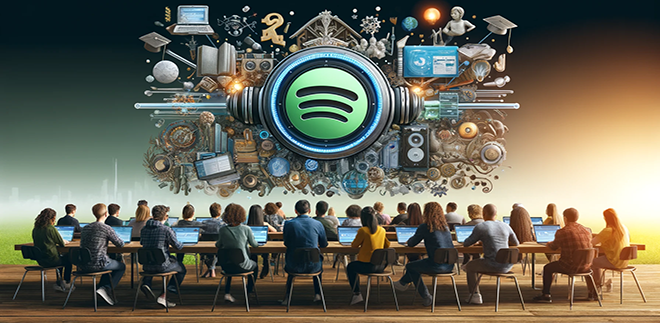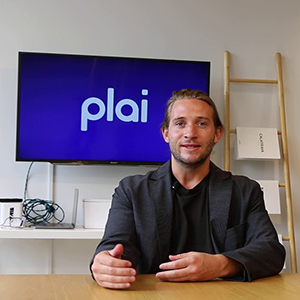
Spotify’s recent announcement about a new feature it was testing caught many by surprise, as it diverges further from its musical streaming foundation than even podcasts or audiobooks. It’s the introduction of an unlikely pairing — educational video courses.
Spotify is entering the world of e-learning. “What type of courses?” you ask. They’re offering how-tos on just about any topic you can imagine. How will the videos look? Think YouTube, well, the educational part of YouTube, mixed with a little bit of LinkedIn Learning.
For publishers, this can unlock a gold mine. As third-party publishers own the content, they license it to Spotify. In terms of revenue sharing, earnings are divided among the creator, the publisher, and Spotify. Additionally, Plai, an AI-powered platform that allows brands to swiftly create, deploy, and monitor their campaigns across various platforms, will provide advertising offerings within these new educational offerings.
Alongside these revenue opportunities, the advantages of Spotify’s platform become evident. Consider this: 85% of Facebook users browse with the sound off, which means your ads may never be heard. Conversely, Spotify is modern-day radio – listeners keep the audio on when the app is open, allowing your ads to be seen and heard during active listening sessions
We caught up with Logan Welbaum, founder of Plai, to learn how this new e-learning initiative is reshaping the industry.
Yakira Young: In what ways can educational content offer a different or enhanced level of user engagement compared to traditional entertainment content on platforms like Netflix or Max? 
Logan Welbaum: Education is one of the critical content pillars along with Inspire, Humor, and Excite. If you can reach people during the “how to” moments then you will be an extremely valuable brand. Just look at Home Depot or Lowe’s YouTube content (e.g How to plant container pots. A lot of it is focused on education and how-to’s and then shows how their products can fit into that. “How to” is one of the most searched phrases on YouTube, Google, and now potentially Spotify.
It’s crucial to reach potential customers during the “how to” moment when they are deeply engaged in the marketing funnel. They are aware of the problem and are actively seeking solutions. The timing is optimal to reach consumers and offer a helping hand.
YY: Can you share insights on how user engagement with educational content compares to traditional entertainment content and how publishers can leverage these insights for content planning?
LW: It’s the perfect retargeting machine. Provide value with a helpful “how to” video ad and remarket to those who listened to it at a later time. Let’s say my friend John is watching a video about new cars in 2024. He may already have a car and now is searching for the best ways to improve his car performance. Ford or GM could reach him with helpful ideas and ways to improve his car performance and then remarket Ford or GM products to him after they have provided value.
YY: How can publishers use in-depth user data and content preferences to attract marketers with the promise of highly targeted, contextual advertising within educational content?
LW: Just think of the problems your customers are trying to solve. For example, we help people grow their businesses with targeted ads. The problem is how they run targeted ads. They may be looking at “how to run Facebook ads in 2024”, so we will make and provide content just for that specific problem. Eighty percent to 90 percent of the video is just providing value. For the other 10 percent, we might mention that they can use Plai to make the whole process much simpler.
At Plai, we are focused on targeting interests based on podcasts. For example, realtors can effectively reach active buyers or sellers who have been listening to real estate podcasts for tips on when to buy or sell.
YY: How do current trends and user feedback shape your predictions for the future of educational content on audio and video streaming platforms?
LW: I have over 500K social media followers, which I grew by educating people — not by promoting Plai. Educational content is key for brands to be seen as thought leaders, and it provides helpful content without asking for anything. Sure, it takes work and time, but it is the best way to build a loyal customer base and following. The goal is to help people, and that comes from educational content.